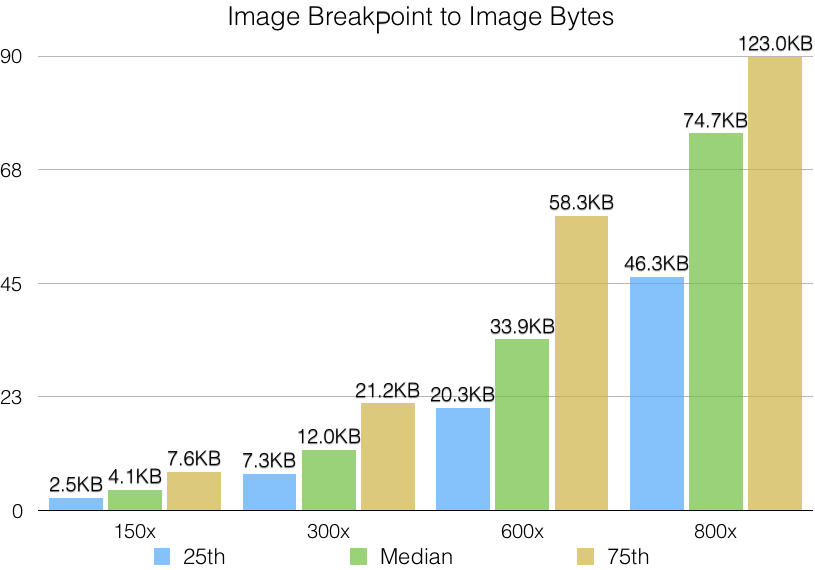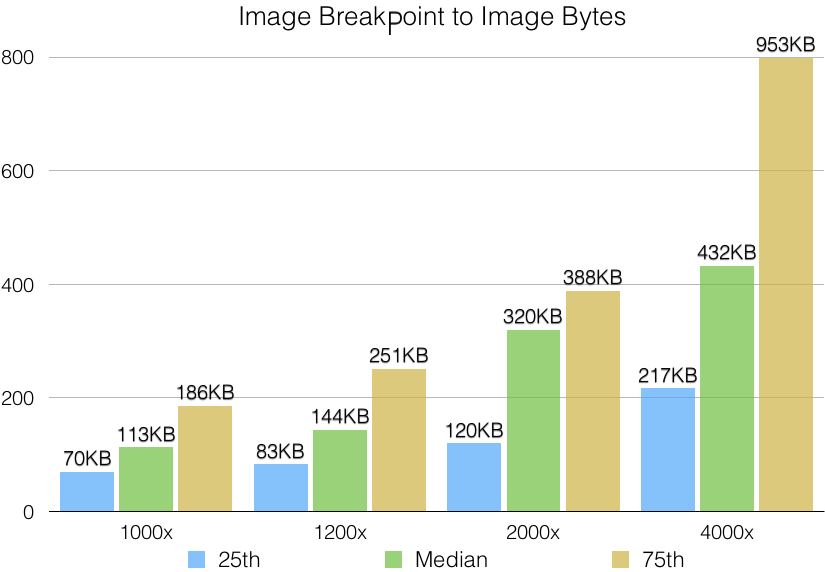Chapter 13. Image Delivery
Optimizing image delivery is just as important as using the right capabilities for each format and leveraging the best practices of the browser. In this chapter we will explore the practical aspects of leveraging all the best practices and the impact on operations.
Image Dimensions
As we have now discussed multiple times in Chapters 9, 11, and 12, reducing image dimensions can improve not only network performance but also memory performance. Small images for small devices on slow networks or low memory is better than using one large image for all situations—desktop and mobile alike.
In the section “Selecting the Right Image Width” we discussed allocating buckets for different viewports. Looking at a sample of 1 million JPEG images we can examine the impact of image dimensions on file size. Figures 13-1 and 13-2 compare images at different breakpoints (assuming at least a 2:1 ratio) again by sizes—broken out by 25th, 50th, and 75th percentiles. Of course, every image has its own distribution and this should be used for illustration only.

Figure 13-1. Image size to image breakpoints (150–800)

Figure 13-2. Image size to image breakpoints (1,000–4,000)
This makes sense: the larger the dimensions, the larger the file, and the longer the image ...
Get High Performance Images now with the O’Reilly learning platform.
O’Reilly members experience books, live events, courses curated by job role, and more from O’Reilly and nearly 200 top publishers.

